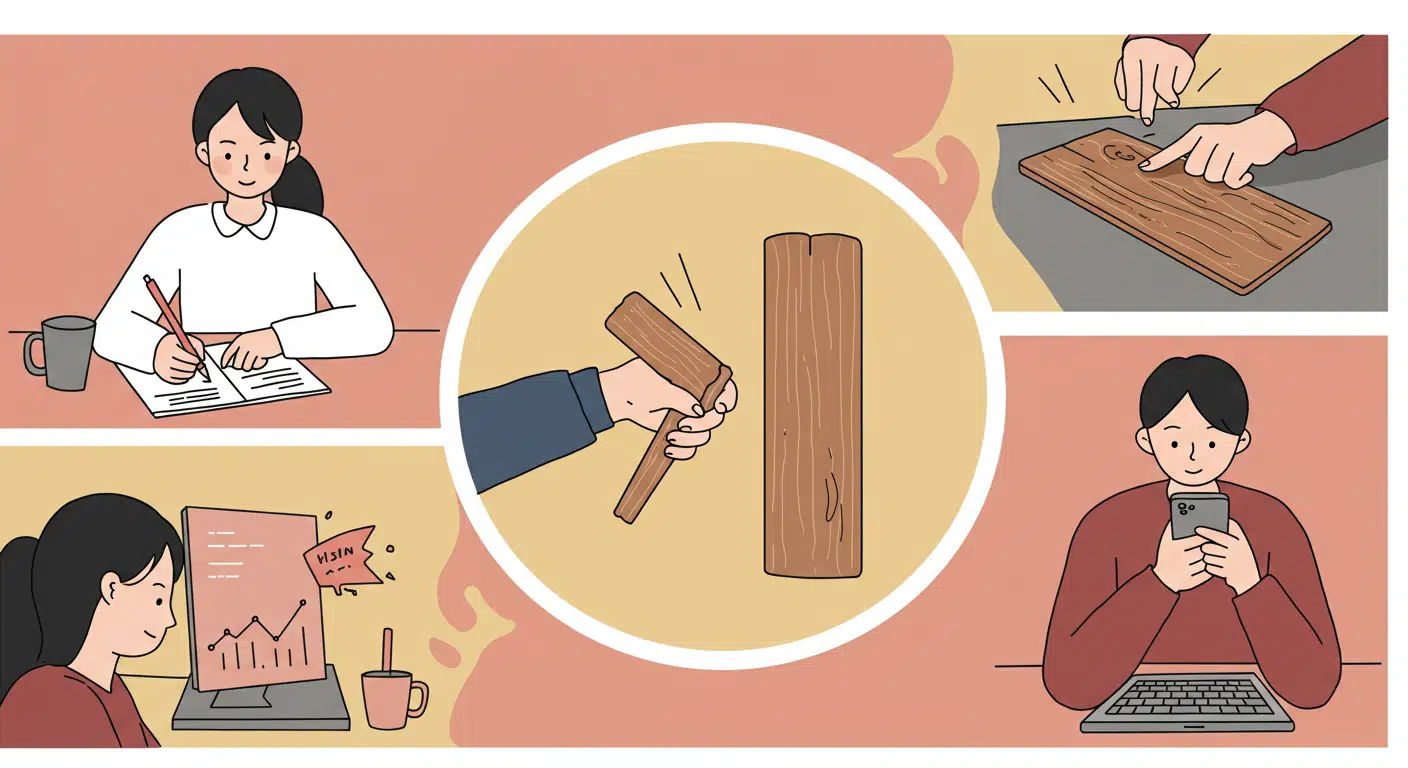According to widespread folk belief across European and derivative cultural traditions, physically knocking one’s knuckles against a wooden surface—typically immediately after making a hopeful prediction or remarking on ongoing good fortune—serves as an urgent defense against potential misfortune. This act, now deeply embedded in popular expressions and gestures, is thought to guard against supernatural consequences such as attracting envy or prompting a witch’s curse.
The protective mechanism is variously explained: in some traditions, the act awakens benevolent spirits believed to reside in trees and wooden materials; in others, it interrupts or confuses negative energy patterns that may have been triggered by boasting or inviting fate. In Christian interpretations, the gesture symbolically connects to the wood of the crucifix, invoking divine protection through subtle sacramental reference.
The ritual is considered most effective when done using closed knuckles rather than an open hand, on a surface made from real wood—not laminate or synthetic alternatives. Timing is crucial: it must follow immediately after a tempting or fate-related statement, such as expressing hope for continued health, success, or safety.



